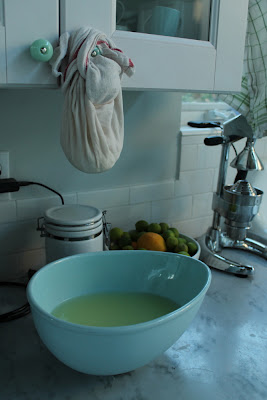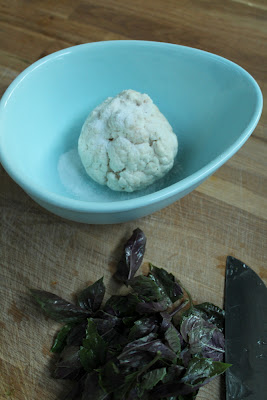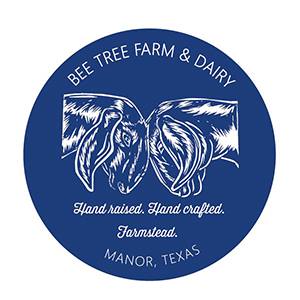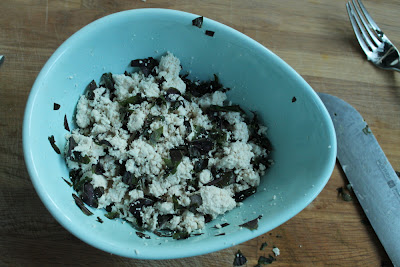Tasted Like the Sun
About a week ago a woman came to the house to take a look at Matilda, our extremely ornery cow who is for sale. Although she decided to pass on the cow, she stopped and stayed for awhile to talk about her own small homestead, goats, and Dexter breeding. After handing me a few jars of peach jam from her orchard and loading me down with unused mineral feeders for the goats from the back of her truck (“Take them, take them. I collect this stuff in case I meet people who need them,” she said) – she handed me the most precious gift of all. Before heading down the road, Christine casually reached into her glove compartment and took out a business card, saying, “You know about the Grade A raw goat milk dairy just down the road from you, right? Youngs Prairie Dairy?” I must have gotten wide-eyed and slack jawed. A raw milk goat dairy? Here? In my neighborhood? “Oh Jenna, you need to make friends with Fran, take this card. Call her. Today. Bye!” And into the truck she jumped, revved the engine, and bounced down the drive, sticking her arm out the window for a wave.
I stood there in the road like that for a good, full minute -my arms wrapped around heavy duty plastic animal feeders, jars of peaches, and my fingers gripping the little rectangular card. Then I ran inside and hopped online. Sent one of my gibberish notes to the dairy, “Hi I’m Jenna. I love goats. I would like your life. Please teach me.” She wrote back in an hour, “I love goats too! Let’s talk about them – come over tomorrow.” The following afternoon, my mother, sister and I made the 10 mile trek over to Fran’s dairy. For the rest of my family, it was just a little trip to a farm. It was pretty, sure, but that’s about it. For me – of course – it was magical.
Fran’s property is nestled in the middle of a 44 acre forest. Her big yellow house sits up on a hill under a shroud of trees. Just beyond the house is a network of hotwire fencing and the freshly built dairy, a lovely galvalume covered building with sage trim. It looks smart and clean, shining there in the middle of a checkerboard of fences. Fran walked out wearing a big smile, hands on hips, and gave me the type of firm and honest handshake I always expect from these people. “Hi, I’m Fran. Wanna see the goats?” Oh boy, did I. We met the bucks, two enormous bearded billies, one of whom was in full rut. As he paced, moaned and periodically peed on his own face, Fran sighed and rolled her eyes, “People who don’t have goats – they’re shocked by this. My city visitors usually walk away pretty fast when he starts doing this, and I just say, ‘Well, you can’t get the milk without this kind of stuff.’ ” I watched the buck pee mournfully on his own face and knicker sadly at the does who, not in heat and out of breeding season, could care less about his histrionics. In a few months, my own little buckling Boss will be making a fool of himself in a similar way – a stinky, and annoying reality. But, like she said, you can’t get milk without this kind of stuff.
After pointing out a few prize does (Old queen Ella laid atop the round bale and surveyed the pasture), Fran ushered us into the dairy. Once inside we immediately smelled the fresh goat milk soap cakes curing on a counter – spearmint eucalyptus with green clay. She led us into the milking parlor and showed us how her fancy stanchion and milk machine work. She handed us the bottles of udder cleaner and teat dip, then we went back into the make room (literally where you “make” milk products) for what turned into a long and detailed discussion of goat care and milk handling. In essence, she opened her facility to us the way any farmer selling directly to the public, should. I stuck my hand in her (Coyote Creek Mill!) organic goat feed. I learned what products she uses to worm her goats. We bought two gallons of milk knowing exactly what the animals had eaten, how they’d been treated, what was used to clean their teats.
The contents of all food should be this available to us, as consumers. And we should be able to pronounce and understand everything that went into the creation of it. Especially with milk, the history of which (in America) is rather gory and disgusting, it is particularly unbelievable to have access to a product so local, so clean, and so accessible. I won’t go into the controversy of raw milk, or the incredible health benefits it provides, or the government regulations that keep it from farmer’s markets (even from licensed, Grade A dairies!!). But knowing all of these things makes our access to this sort of product incredibly precious. I happily handed over $7/half gallon for Fran’s milk (and $3/bar for the beautiful soaps), because I understand exactly what it took for Fran to produce them, and I know how lucky we are to have it available so close to Austin.
I left her dairy with an invitation to stay in touch and to return for some goat veterinary lessons and the assurance that a seasoned goat herder was just down the road in case of emergencies. We came back to the house and opened one of the little jugs, pouring the contents into three small cups. I felt like clinking glasses – for me – this was a real celebration. The milk was perfect, sweet and cold with a salty finish. Not an ounce of “goat” flavor detectable. It was from that morning’s milking and the freshest dairy we’d ever had. I peeked out the kitchen window that looks onto the goat pen where my own baby goats were butting heads and spinning in the tall grass. What a world this has unlocked for me – without having put Matilda up for sale, I’d never have met Christine – I might not have heard about Fran. How many other farmers are tucked into the trees in these hills?
Last week I drank one half gallon of milk over cereal and peaches and in tall cold glasses. The other half-gallon was turned into the simplest of all cheeses since I have no culture or rennet on hand. Adding a bit of cider vinegar (or any acid) to cheese turns it into queso blanco or paneer – a chewy, crumbly little cheese that can be made sweet or savory. To mine, I added sea salt and purple basil. I put it on a salad with my cucumbers and tomatoes. The entire salad, grown outside the front door, with cheese from goats down the road, tasted like the sun, the dirt, the wind, and the grasses that live in this little pocket of my county.
Vinegar Cheese:
-Stirring constantly, heat 1 gallon of milk to 180* or just to the point of boiling. Don’t let milk scald
-Immediately add 1/2 cup of vinegar (any vinegar – but cider vinegar’s extra good for you) to the milk.
-Stir gently. Curds and whey separate immediately.
-Once curds have formed, let it rest for about 10 minutes. 
 -Pour into clean tea cloth, muslin, or cheese cloth and strain all whey – letting it drip into a big bowl on your counter.
-Pour into clean tea cloth, muslin, or cheese cloth and strain all whey – letting it drip into a big bowl on your counter.
-Season any which way (honey and nuts or salt and herbs). 
Or, even better, just eat the curds unseasoned, with your fingers.


2 Comments
Brett
June 14, 20122:10 pm
Take a moment to step back into time, back when you FIRST had the notion of buying land in the country. Think about it for a moment.
Now, looking at your post, tell me…
1) Would you have imagined being as excited as you were about the gifts and the trip to the goat farm?
2) Were you aware of the farming terms you used, back then?
3) Is it as wonderful as you'd imagined? Better?
As always, enjoyed your post!
Aunt Lisa
June 14, 20125:03 am
I don't know what to say. I KNOW you're as close to heaven as you've ever been and your both arms (maybe Jeremy's too!) have to be black and blue from pinching. I'm awe struck for you. WHAT a DAY!!!